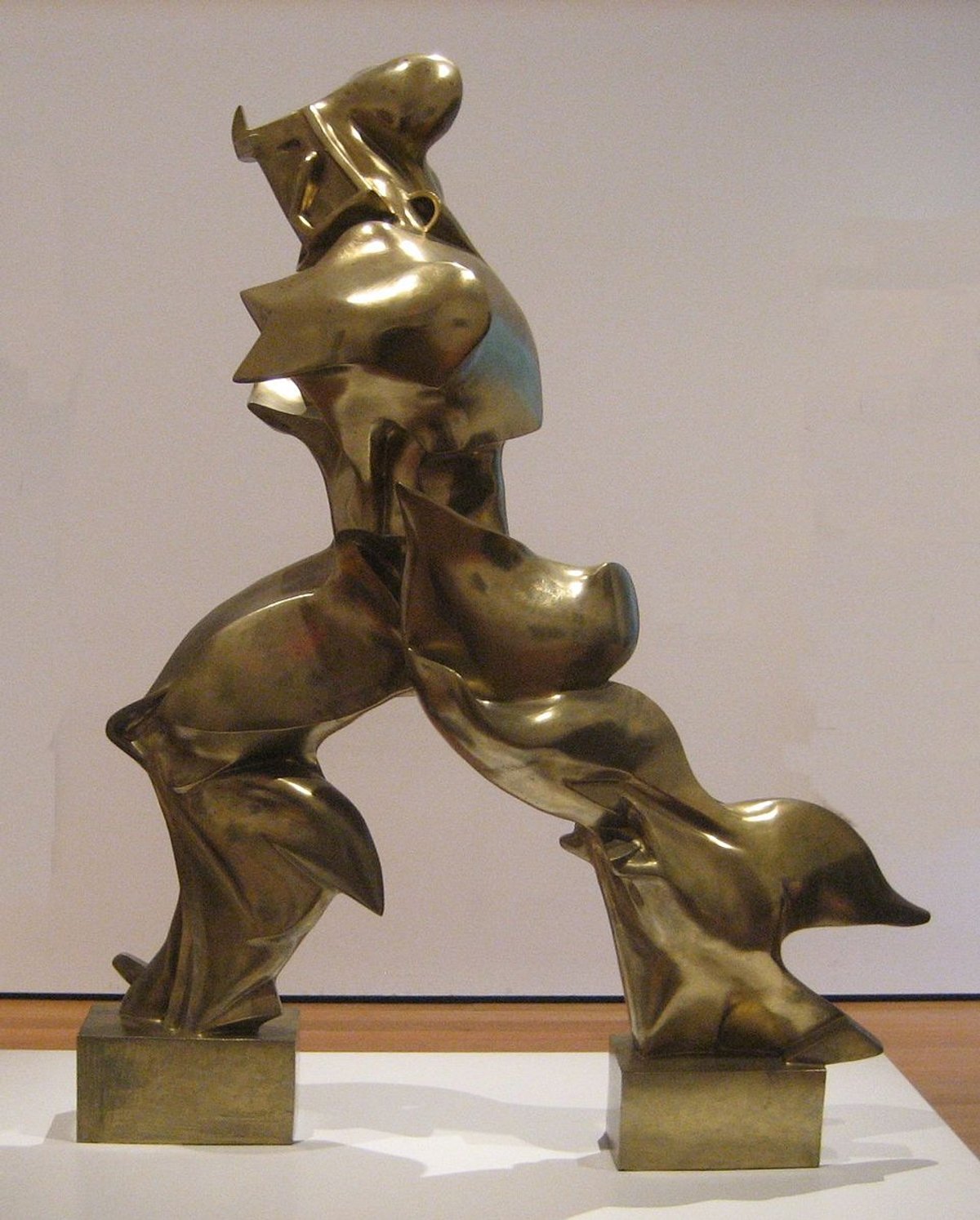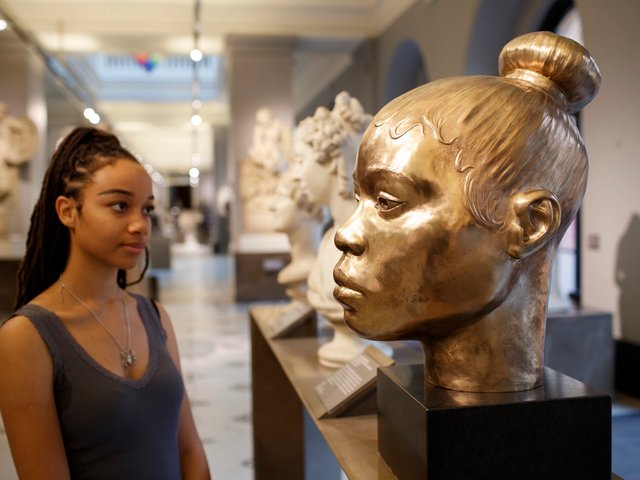The high-profile Italian collector Roberto Bilotti has withdrawn a major piece by the Italian Futurist artist Umberto Boccioni from an exhibition at the Galleria Nazionale d’Arte Moderna e Contemporanea in Rome, citing safety concerns and inaccurate caption information.
The sculpture, Forme uniche della continuità dello spazio (Unique Forms of Continuity in Space, 1913), was due to be on show as part of Il Tempo del Futurismo until 28 February. However, as Bilotti told the Italian newspaper Il Corriere della Sera, it was removed due to “some misleading captions along with broken window panes, dangling sensors and exposed cable ducts”.
Comparing the exhibition in Rome to the 2023 United Nations exhibition The Grand Italian Vision. Collezione Farnesina, Bilotti added: “Forme uniche was chosen by the Italian government as a symbol of our country at the United Nations. And yet it was exhibited in a dark corridor, in the shadows, and not valued at all.”
Boccioni’s Unique Forms of Continuity in Space (1913), considered a Futurist masterpiece, ripples outwards into the environment, penetrating the air. In his manifesto on sculpture, La Scultura Futurista published in April 1912, Boccioni stressed how his works fuse with their surroundings, saying: “We will break open the figure and enclose it in its environment.”
In a letter to the Italian publication Il Giornale dell’Arte, Bilotti further explains his reasoning for removing the work. The collector claims that the wall caption accompanying the sculpture, which stated that the work was a “reproduction, 2011”, was not accurate. In an interview with Artribune, he describes “reproduction” as a mistranslation of the word “surmoulage”, which is defined as a bronze cast from another bronze.
He goes on to criticise the caption as “sloppily” done, and notes the use of the date 2011—when the bronze in question was made—as opposed to 1913, when the work was conceived. In the same interview, he says: “The Bilotti [Boccioni] bronze, commissioned by the Marinettis [the family of the founder of Futurism, Filippo Tommaso Marinetti], in line with [the artist’s sister] Amelia Boccioni's wishes, is the only casting considered legal in compliance with copyright and with the Marinettis' authorisation.”
Galleria Nazionale d’Arte Moderna e Contemporanea, however, has hit back against these claims, confirming in a statement that all of the works on show are “kept securely and in optimal conditions”, according to international museum standards. The gallery continued: “The caption in question, previously accepted by Bilotti, corresponds to the loan form and the delivery note signed in front of witnesses by Bilotti…In this regard, the gallery clarifies that the work lent by Roberto Bilotti is a very recent bronze, dated 2011, and as such is not historical.”
The gallery stresses that, “as a very recent reproduction, Bilotti's work had not been placed in one of the exhibition rooms with the 350 historical works of art in the exhibition, but rather in an environment dedicated exclusively to education with multimedia installations”.
Bilotti also claims that another Boccioni work that he loaned to the exhibition, Antigrazioso (1912-13), was damaged during the installation process. The gallery did not address this accusation in its statement.
Roberto Bilotti has been contacted for comment. A full statement from Galleria Nazionale d’Arte Moderna e Contemporanea can be read here.



